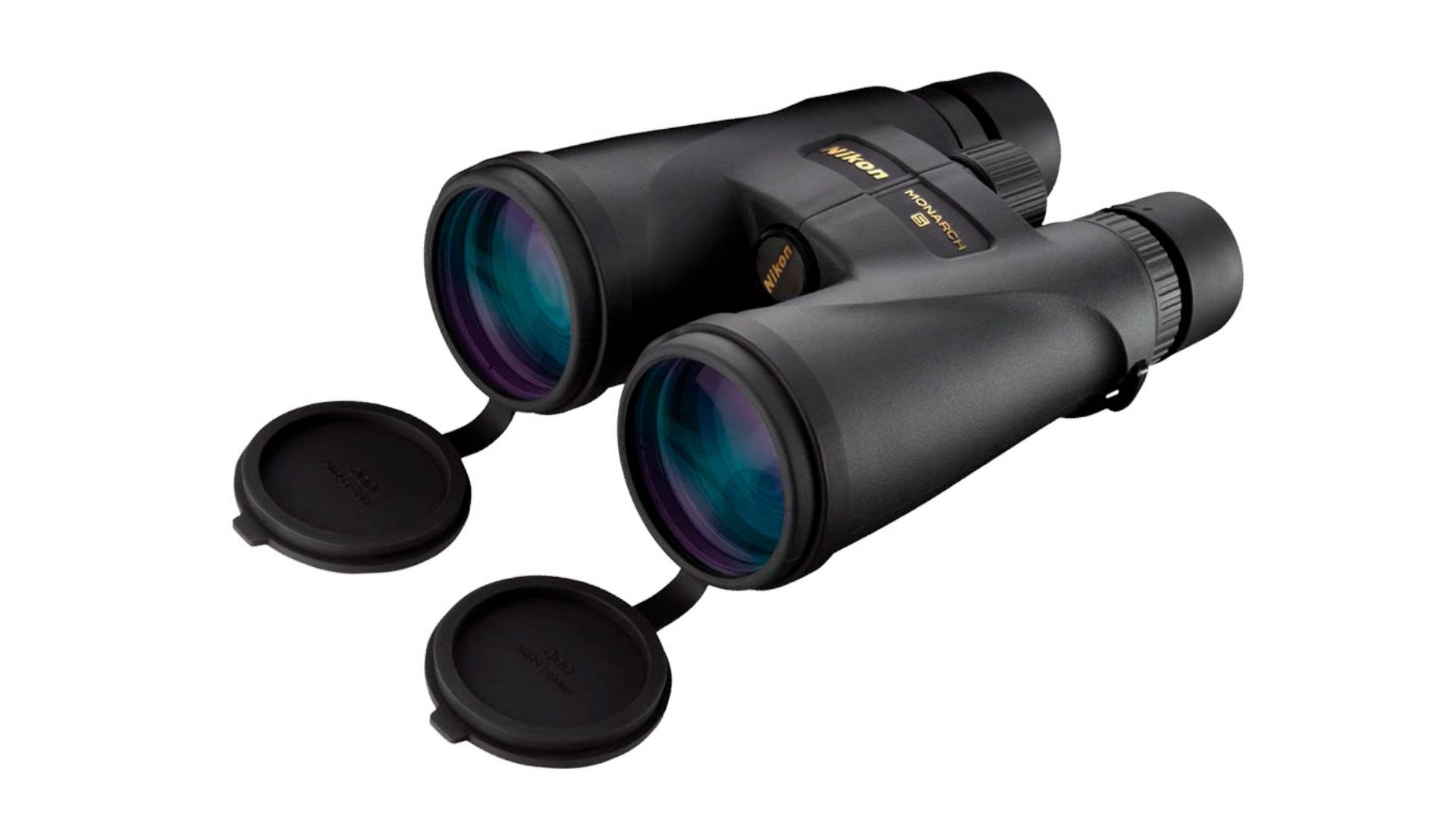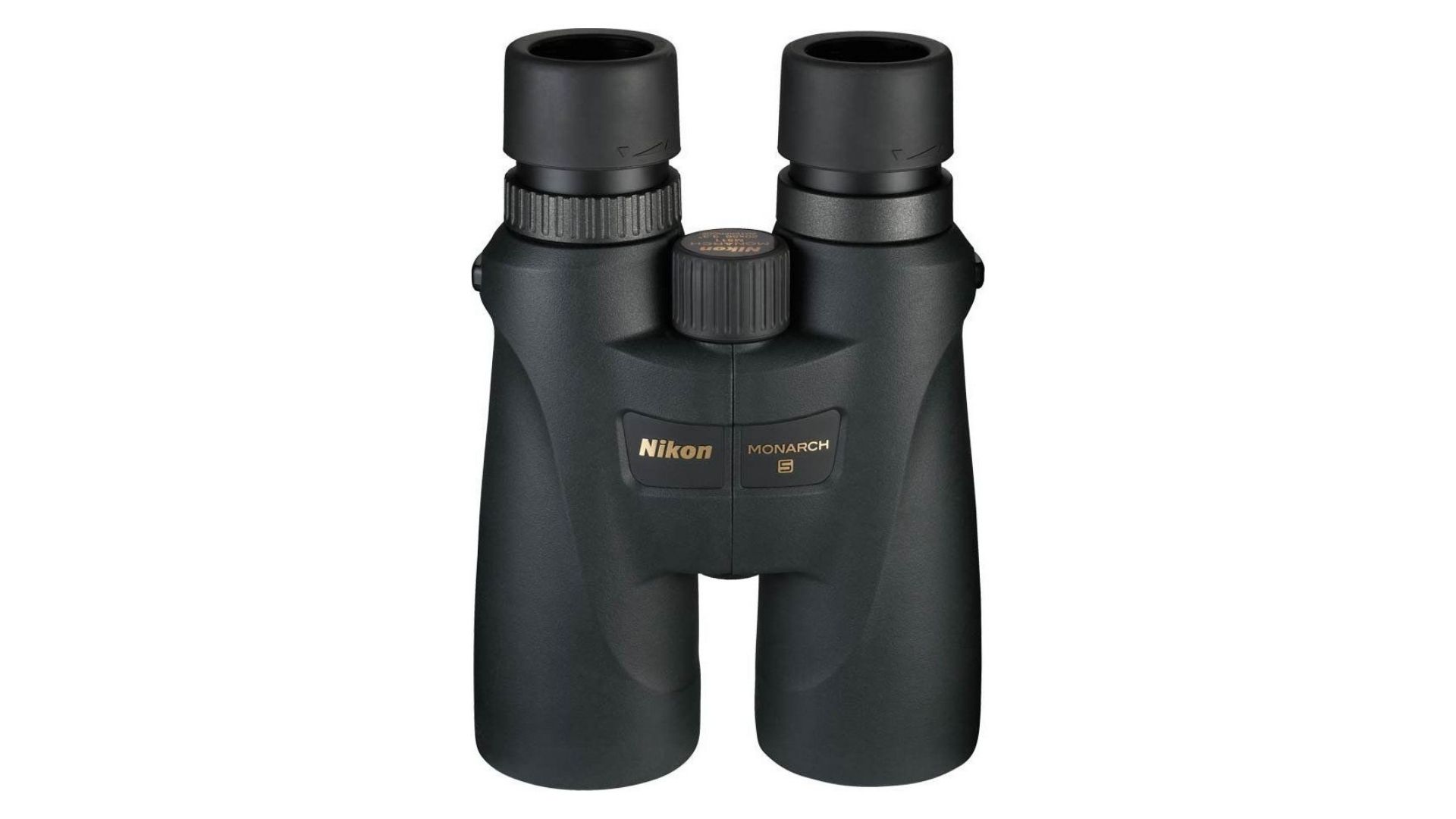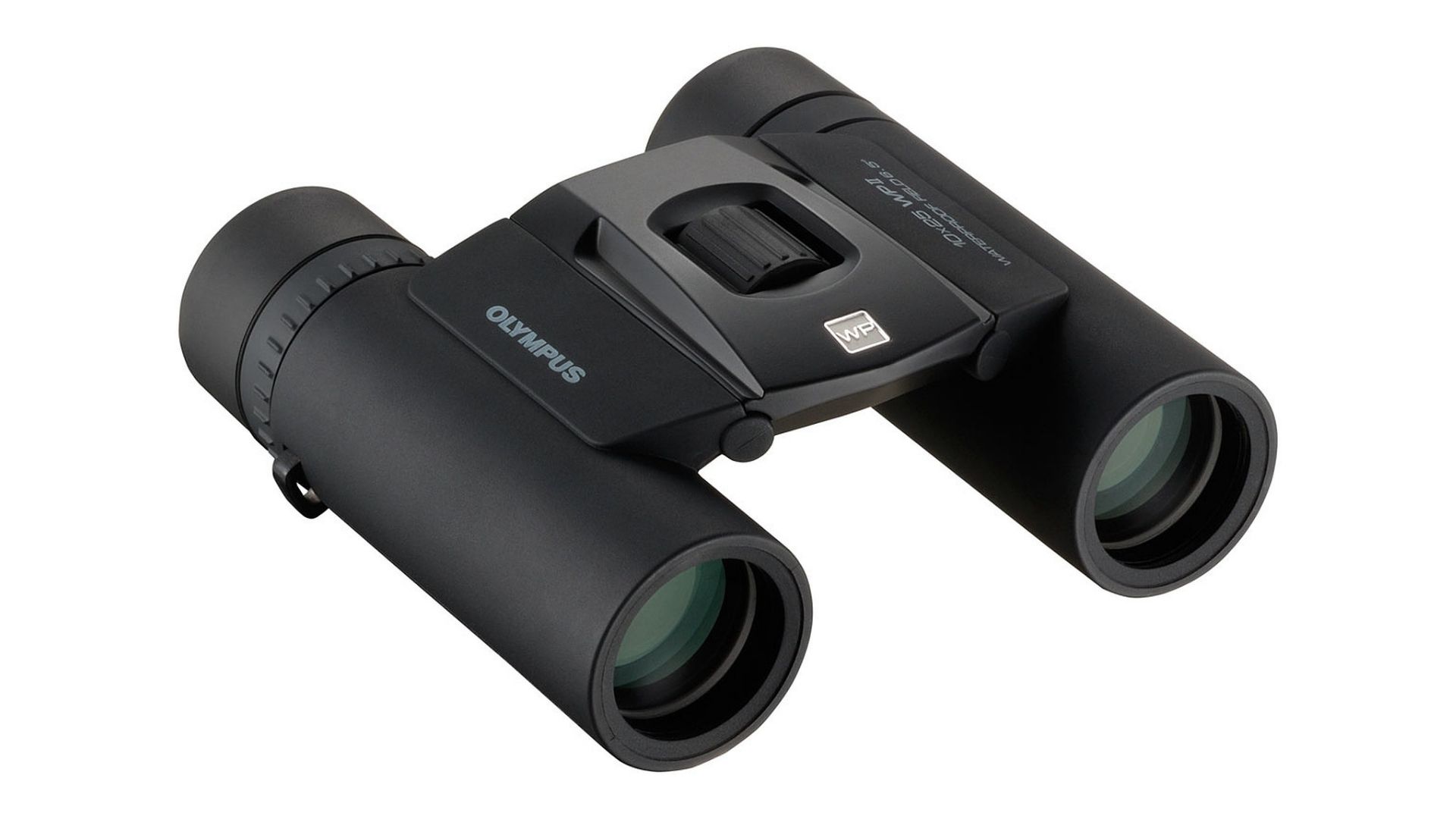Olympus 10x25 WP II vs Nikon Monarch 5 20x56: which wildlife binoculars are best?
We compare two of the best mid-range binoculars for birdwatching, wildlife and all-round use


They're in entirely different price brackets, but is there really a major difference between the Olympus 10x25 WP II and Nikon Monarch 5 20x56 binoculars when it comes to nature-spotting? For some people, are the budget-friendly Olympus pair a better option than the blow-the-budget Nikons? This article digs into just that.
There is so much choice out there that figuring out the best binoculars for your needs can be difficult. Choose wisely, and and your binoculars will last a long time, so it's wise to understand exactly what you're paying for before you invest.
Olympus 10x25 WP II vs Nikon Monarch 5 20x56: magnification and objective lens
You need to know about two numbers when buying any pair of binoculars: magnification and objective lens size, which are always quoted on every pair as a combination of numbers such as 10x25, 20x56 and so on. So let's decode what's going on with the Olympus 10x25 WP II and Nikon Monarch 5 20x56.
Our first contender is the Olympus 10x25 WP II, with 10x magnification and an objective lens measuring 25mm. Meanwhile, the Nikon Monarch 5 20x56 achieves 20x magnification and has an objective lens measuring 56mm.
Just like a camera, a bigger lens will let more light in. You'll get a much brighter image, which is essential if you plan to use binoculars in low-light – so around dusk or dawn, or at night for stargazing.
Since the Nikons also have a higher magnification, they're obviously better, right? Not so fast. Binoculars with large lenses and lots of magnification can get very heavy very quickly, and besides, 8x or 10x magnification is what most 'general use' binoculars employ. So that puts the Olympus 10x25 WP II back in the running.
Do you want the very finest views or do you need binoculars that are lightweight and portable? That's the essential difference between the Olympus 10x25 WP II or Nikon Monarch 20x56 binoculars. Let's take a look at how they compare elsewhere to help you make that all-important buying decision. For more nature-spotting options, check out our guide to the best binoculars for birdwatching.
Olympus 10x25 WP II vs Nikon Monarch 5 20x56: design and features

In terms of portability, these binoculars could hardly be more different. With a thoroughly straightforward and very practical design, the black Olympus 10x25 WP II binoculars are roof‑prism binoculars with 10x magnification and a 25mm objective lens. They're aimed at outdoor enthusiasts who prize portability over everything else. Weighing a mere 270g, they're foldable, creating a compact product that's easy to store in a pocket. A nitrogen-filled body makes them fully waterproof, fog-proof and dirt-proof – though not drop-proof – while they're rubber-coated, so easy to grip.
Turn to the Nikon Monarch 5 20x56 and you immediately have more to deal with. Though 20x magnification is a step-up, the key feature is its 56mm objective lens. That's huge. It also means that the Nikons themselves are weighty at 1.2 kg, which is almost five times heavier than the Olympus 10x25 WP II.
Otherwise, they boast a near-identical rugged design, with the Nikon Monarch 5 20x56 also being waterproof and fog-proof. There's also a similar rubber armour that makes them easy to grip. However, they pip the Olympus 10x25 WP II with their novel flip-down lens caps.
Winner: Nikon Monarch 5 20x56 triumph because of their all-round build quality and handy flip lens caps that make them impossible to lose.
- Vixen SG 2.1x42 super-wide binocular review
- Olympus 10x25 WP II binoculars: are they any good?
- Nikon Monarch 5 20x56: are they any good?
Olympus 10x25 WP II vs Nikon Monarch 5 20x56: usability

That dual-hinge design and all-round small size makes the Olympus 10x25 WP II easy to travel with, but it also makes it so easy to adjust them for your eyes. A centre-focus knob provides easy focusing (the closest focal point is 1.5m) and there's a built-in dioptric knob for adjusting for your own specific eyesight. Images through its multi-coated optics are reported to be bright, contrasty and colourful, though always in a wide-angle field of view; they zero in on a field of view of 114m at 1,000m. So while they're great for small gardens, their 10x25 specifications mean that experienced bird-watchers – and anyone in big landscapes – are going to want a lot more magnification. Predictably, some users have reported a lack of power for extreme far-range viewing, as well as some occasional lens misalignment. The 25mm objective lens on the Olympus 10x25 WP II also makes them less successful in low-light, so these are not going to be at their best for stargazing.
Not so the Nikon Monarch 5 20x56, which are at their best when used over long distances and in low-light thanks to a massive objective lens. Their close focusing distance is 5m, but where they excel is with long-distance view; they create a 58m field of view from 1,000m away. That means excellent close-ups.
Nikon's ED lenses boost clarity, contrast and brightness in low light, and they're rated as being good for stargazing, though heavy when used for long periods.
The Nikon Monarch 5 20x56 also feature long-eye relief and a high eye-point design, which is handy for those with glasses, as well as turn-and-slide eyecups that are easy to adjust.
Winner: Nikon Monarch 5 20x56 for more versatile and impressive optics, and great views from long distances and in low light.
Olympus 10x25 WP II vs Nikon Monarch 5 20x56: price and extras

With the Olympus 10x25 WP II selling for around $150/£110/AUS$150 and the Nikon Monarch 5 20x56 going for $900/£719/AUS$1,119 it's immediately obvious that these binoculars are for vastly different budgets and uses.
The Olympus 10x25 WP II ships with a satisfactory neck strap, and a pretty basic carry case that you're probably going to need to upgrade, though they do also come with a generous 25-year warranty. The Nikon Monarch 5 20x56 ships with a more comfortable neoprene neck strap, a sturdy case and a similar 25-year warranty. However, the Nikon Monarch 5 20x56 add a 1/4-inch tripod adaptor that means they can be easily mounted on a tripod. That partly makes up for their heavyweight design.
Winner: Nikon Monarch 5 20x56 is a high-end package with some nicer accessories and more versatility.
Olympus 10x25 WP II vs Nikon Monarch 5 20x56: Which should I buy?

If you want some of the best binoculars around then go for the Nikon Monarch 5 20x56. Great all-rounders that will give you marvellous close-ups and the chance to look at the night sky, they're ideal for using in the garden or taking on safaris at dusk or dawn.
However, don't rule out the Olympus 10x25 WP II, which weigh a fraction of the Nikon Monarch 5 20x56 and can easily be placed in a pocket. Lightweight, compact and waterproof, they're ideal for daytime use and great value in their category.
If you've got one eye on future travel and trips, think of it this way: the Nikon Monarch 5 20x56 are perfect for putting in your car, while the Olympus 10x25 WP II are ideal for those planning on trekking, hiking and adventuring.
Get all the latest news, reviews, deals and buying guides on gorgeous tech, home and active products from the T3 experts
Jamie is a freelance journalist, copywriter and author with 20 years' experience. He's written journalism for over 50 publications and websites and, when he's not writing, spending most of his time travelling – putting the latest travel tech through its paces.
